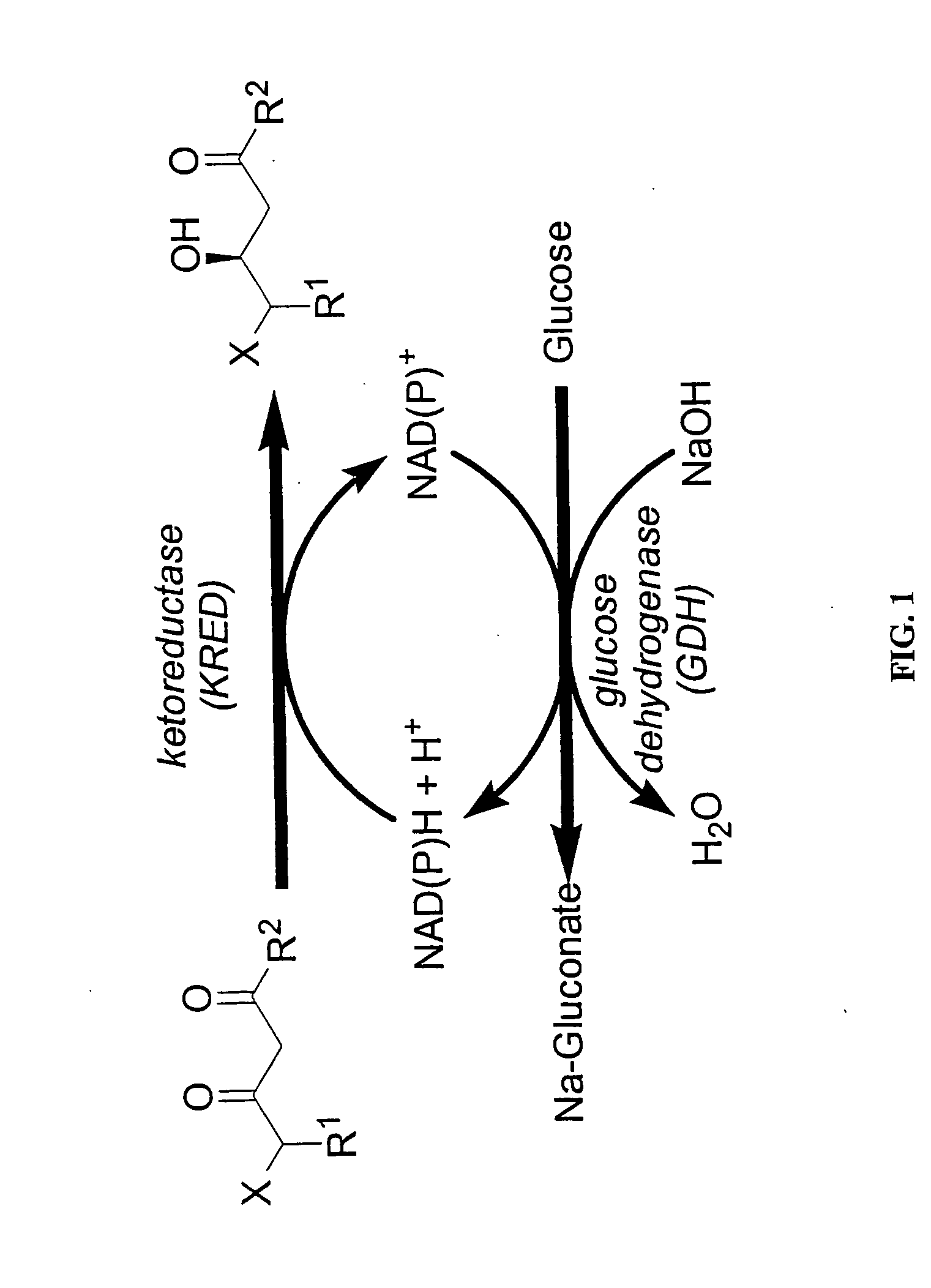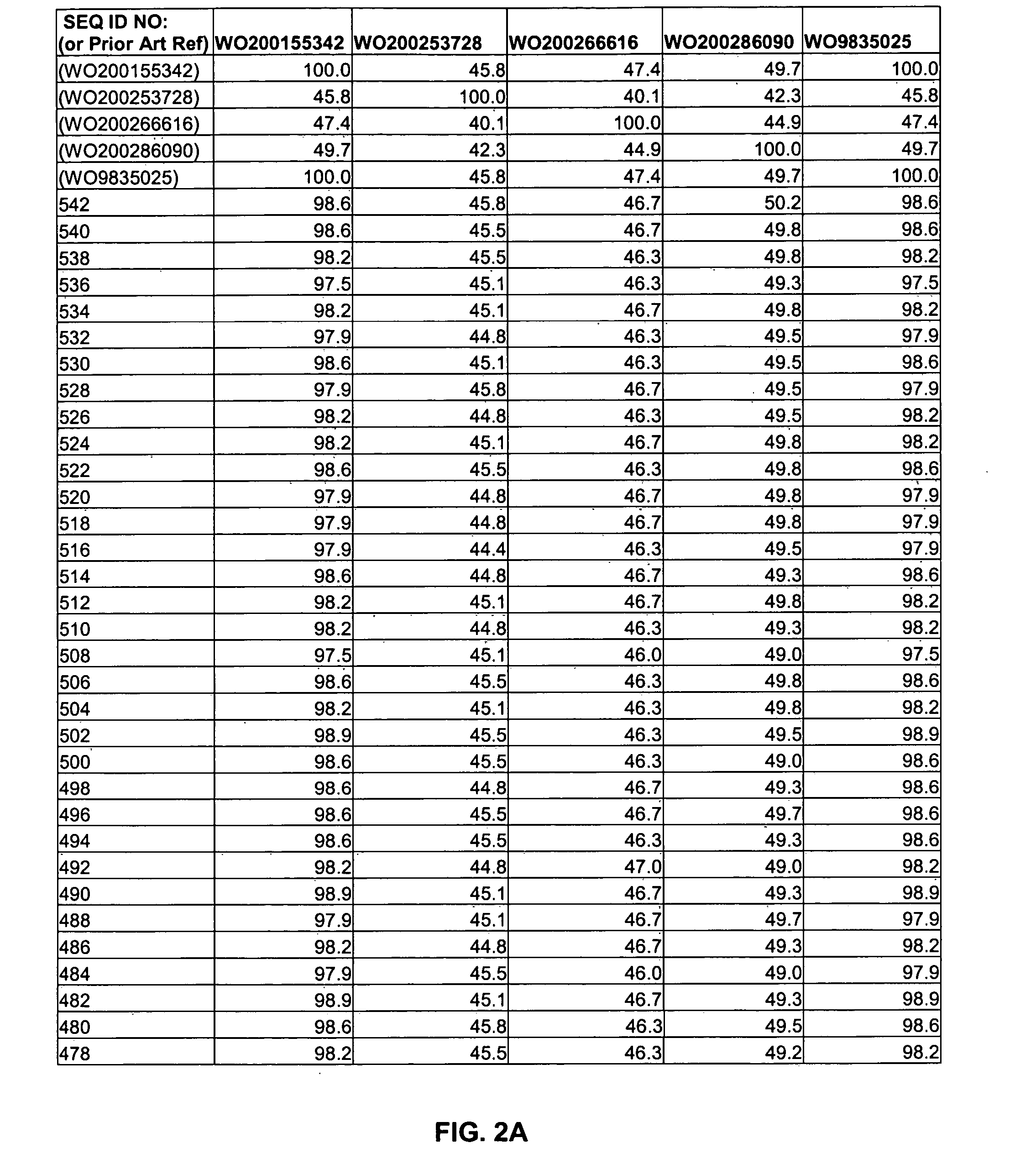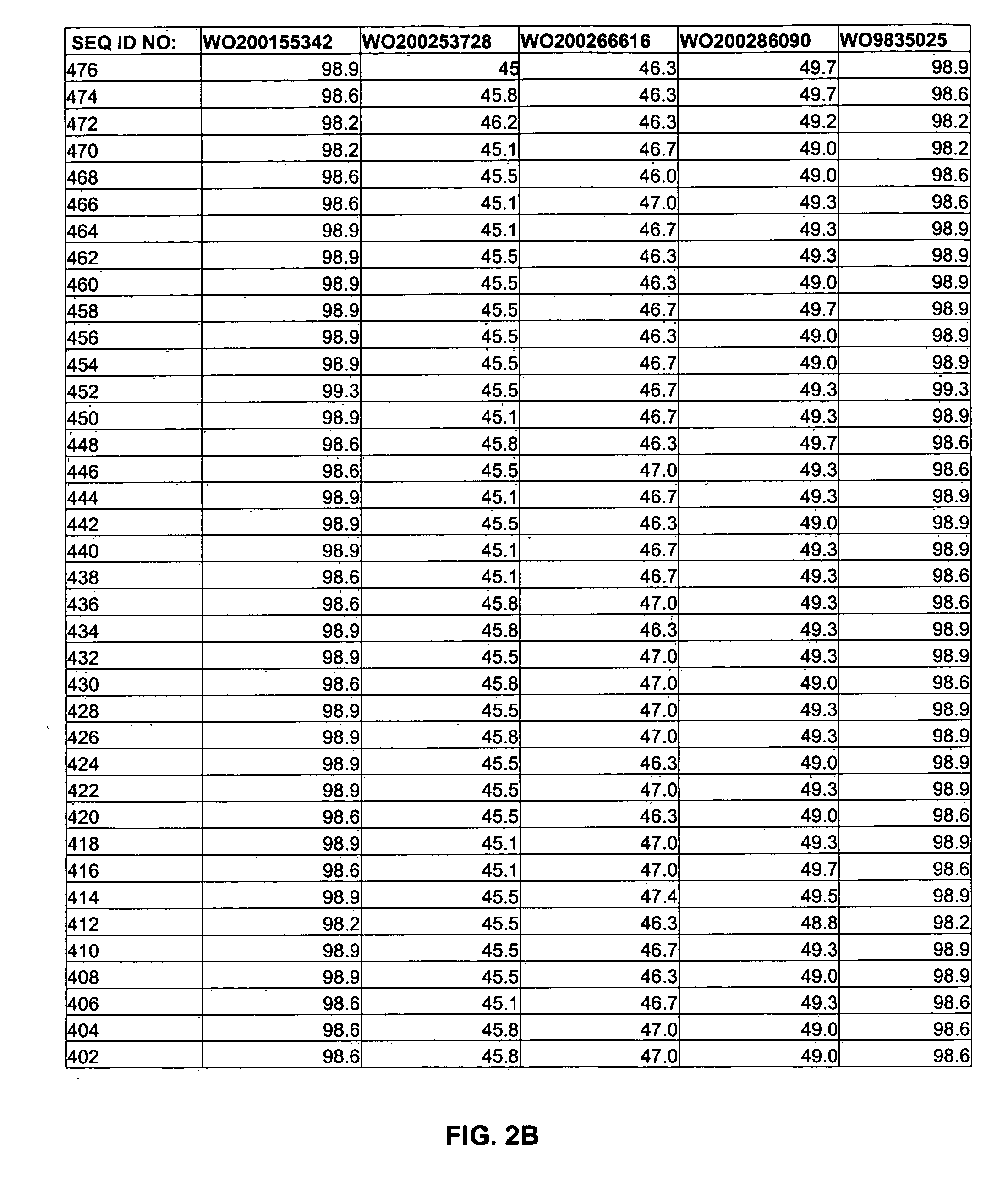Ketoreductase polypeptides and related polynucleotides
a technology of ketoreductase and polypeptides, applied in the field of ketoreductase enzymology, can solve the problems of large number of steps that are relatively expensive to carry out commercially, enzymes are generally considered expensive, and methods requiring protecting and deprotecting steps are not practical to implement commercially, so as to improve kred activity, reduce absorbance or fluorescence, and enhance kred activity
- Summary
- Abstract
- Description
- Claims
- Application Information
AI Technical Summary
Benefits of technology
Problems solved by technology
Method used
Image
Examples
example 1
Construction of Expression Constructs for Expression of Ketoreductase
[0130] An analog of the gene for Candida magnoliae ketoreductase was codon optimized for expression in E. coli and synthesized based upon the known sequence disclosed as GenBank Accession No. JC7338. The analog gene was synthesized using 60-mer oligomers, and cloned into an expression vector (pCK110900 of FIG. 3) under the control of a lac promoter and lacI repressor gene, creating plasmid pKRED. The expression vector also contained the P15a origin of replication and the chloramphenicol resistance gene. Several clones were found that expressed an active ketoreductase (as per the method of Example 4) and the synthetic genes were sequenced. A sequence designated CR2-5 (SEQ ID NO: 1) was used as the starting material for all further mutations and shuffling. CR2-5 had approximately 60% nucleotide identity with the wild-type Candida magnoliae ketoreductase (GenBank Accession No. JC7338).
example 2
Production of KRED
[0131] In an aerated agitated fermentor, 10.0 L of growth medium containing 0.528 g / L ammonium sulphate, 7.5 g / L of di-potassium hydrogen phosphate trihydrate, 3.7 g / L of potassium dihydrogen phosphate, 2 g / L of Tastone-154 yeast extract, 0.05 g / L ferrous sulphate, and 3 ml / L of a trace element solution containing 2 g / L of calcium chloride dihydrate, 2.2 g / L of zinc sulfate septahydrate, 0.5 g / L manganese sulfate monohydrate, 1 g / L cuprous sulfate heptahydrate, 0.1 g / L sodium borate decahydrate and 0.5 g / L EDTA, was brought to a temperature of 30° C.
[0132] The fermentor was inoculated with a late exponential culture of Escherichia coli W3110 (pCR2-5) grown in a shake flask containing LB, 1% glucose (Sigma Chemical Co., St. Louis, Mo.), and 30 μg / ml chloroamphenicol (Sigma Chemical Co., St. Louis, Mo.) to a starting optical density at 600 nm (OD600) of 0.5 to 2.0. The fermentor was agitated at 500-1500 rpm and air was supplied to the fermentation vessel at 1.0-15....
example 3
Ketoreductase Enzyme Preparation (Lyophilized)
[0133] The cell paste was washed by suspending 1 volume wet weight of cell paste in 3 volumes of 100 mM Tris / sulfate (pH 7.2) followed by centrifugation at 5000 g for 40 minutes in a Sorval 12BP. The washed cell paste was suspended in 2 volumes of 100 mM Tris / sulfate (pH 7.2). The intracellular KRED was released from the cells by passing the suspension through a homogenizer in two passes using a pressure of 14,000 psig for the first pass and 8,000 psig for the second pass. The lysate is warmed to room temperature then a 10% w / v solution of polyethyleneimine (PEI), pH 7.2, was added to the lysate to a final PEI concentration of 0.75% w / v and stirred for 30 minutes. The treated homogenate was centrifuged at 10,000 rpm in a Beckman lab centrifuge for 60 minutes. The supernatant was decanted and dispensed in shallow containers, frozen at −20° C. and lyophilized.
PUM
| Property | Measurement | Unit |
|---|---|---|
| concentrations | aaaaa | aaaaa |
| concentrations | aaaaa | aaaaa |
| concentrations | aaaaa | aaaaa |
Abstract
Description
Claims
Application Information
 Login to View More
Login to View More - R&D
- Intellectual Property
- Life Sciences
- Materials
- Tech Scout
- Unparalleled Data Quality
- Higher Quality Content
- 60% Fewer Hallucinations
Browse by: Latest US Patents, China's latest patents, Technical Efficacy Thesaurus, Application Domain, Technology Topic, Popular Technical Reports.
© 2025 PatSnap. All rights reserved.Legal|Privacy policy|Modern Slavery Act Transparency Statement|Sitemap|About US| Contact US: help@patsnap.com



